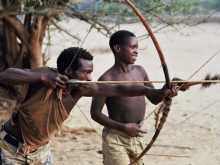As reported by Ars Technica, the findings published in Nature last week, showed that these stone-aged ancestors may not have been entirely different in the way that they networked social groups together. Kate Shaw of Ars Technica writes:
“Modern human social networks share several features…the number of social ties a person has, the probability that two of a person’s friends are also friends, and the inclination for similar people to be connected.”
These common features seem to be ubiquitous throughout all human societies, and across ages. The presumption that our penchant for interconnectedness is somehow a modern trait, or a product of the Internet Age, is false. Instead, the internet has allowed a vastly greater degree of the kind of networking that, according to the researchers, has existed since we first started coming together in communities.
In order to test this hypothesis, the researchers visited 17 Hadza camps in Tanzania, surveying 205 adults. The Hadza are a very isolated group hunter-gatherers, and live very much like humanity would have 130,000 years ago. They organize themselves in camps which are routinely abandoned and reinhabited. In addition to this constant movement, individuals will also move between camps, leaving one group and joining another. In this way, Hadza resemble modern industrialized communities. They tend to react more warmly to individuals that live closer to them, and those Hadza that name more friends are more likely to be named by other Hazda, even those that don’t consider themselves friends. Also, Hadza find friendship within circles that share similar traits, such as age, body fat, and handgrip strength.
One last characteristic that is noteworthy is the group’s study of the sharing or donating of “honeysticks”, a sweet treat to the Hadza. Those that were more likely to donate honeysticks tended to be friends with others that were similarly charitable and cooperative. Likewise, non-cooperators tended to be connected to one another.
Social-networking, it can be said, has existed since societies have, and it seems that those features that have held true in our modern society, may not be so modern afterall.
